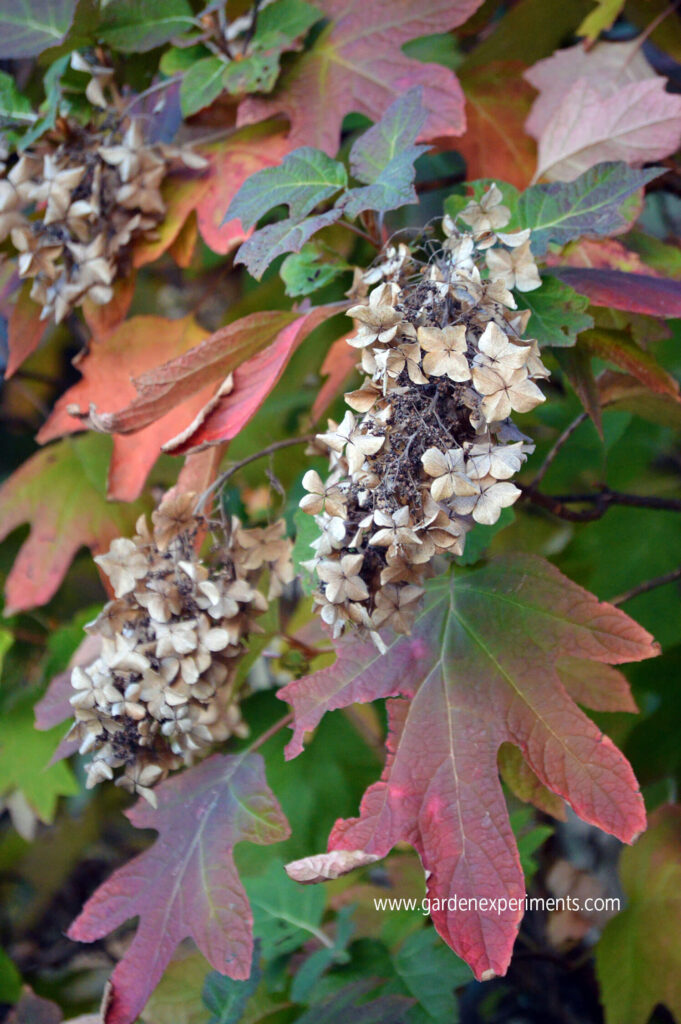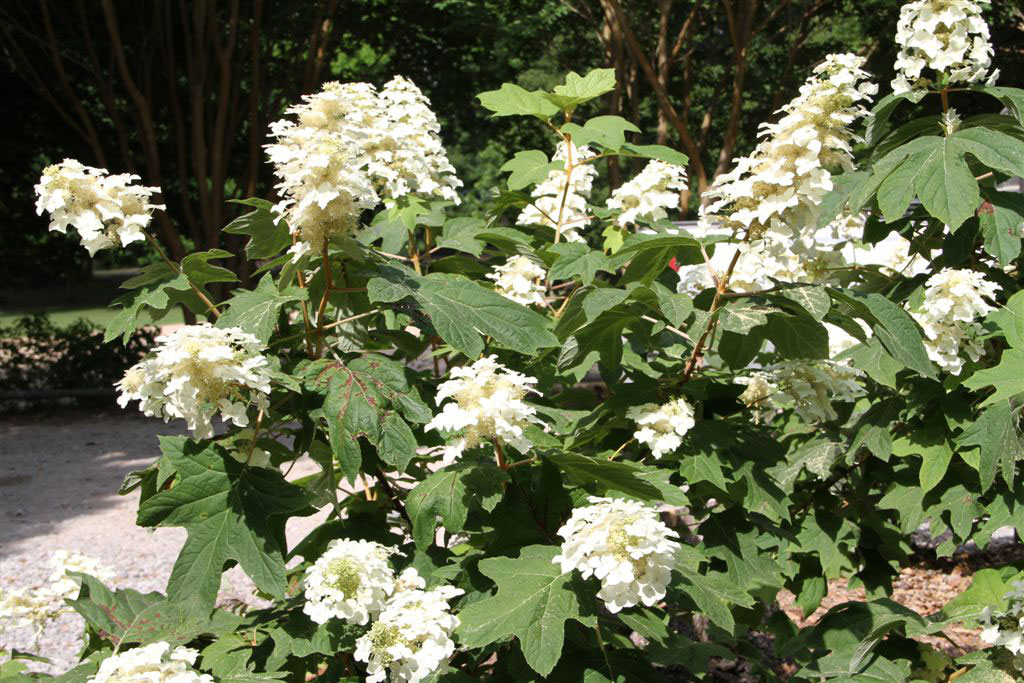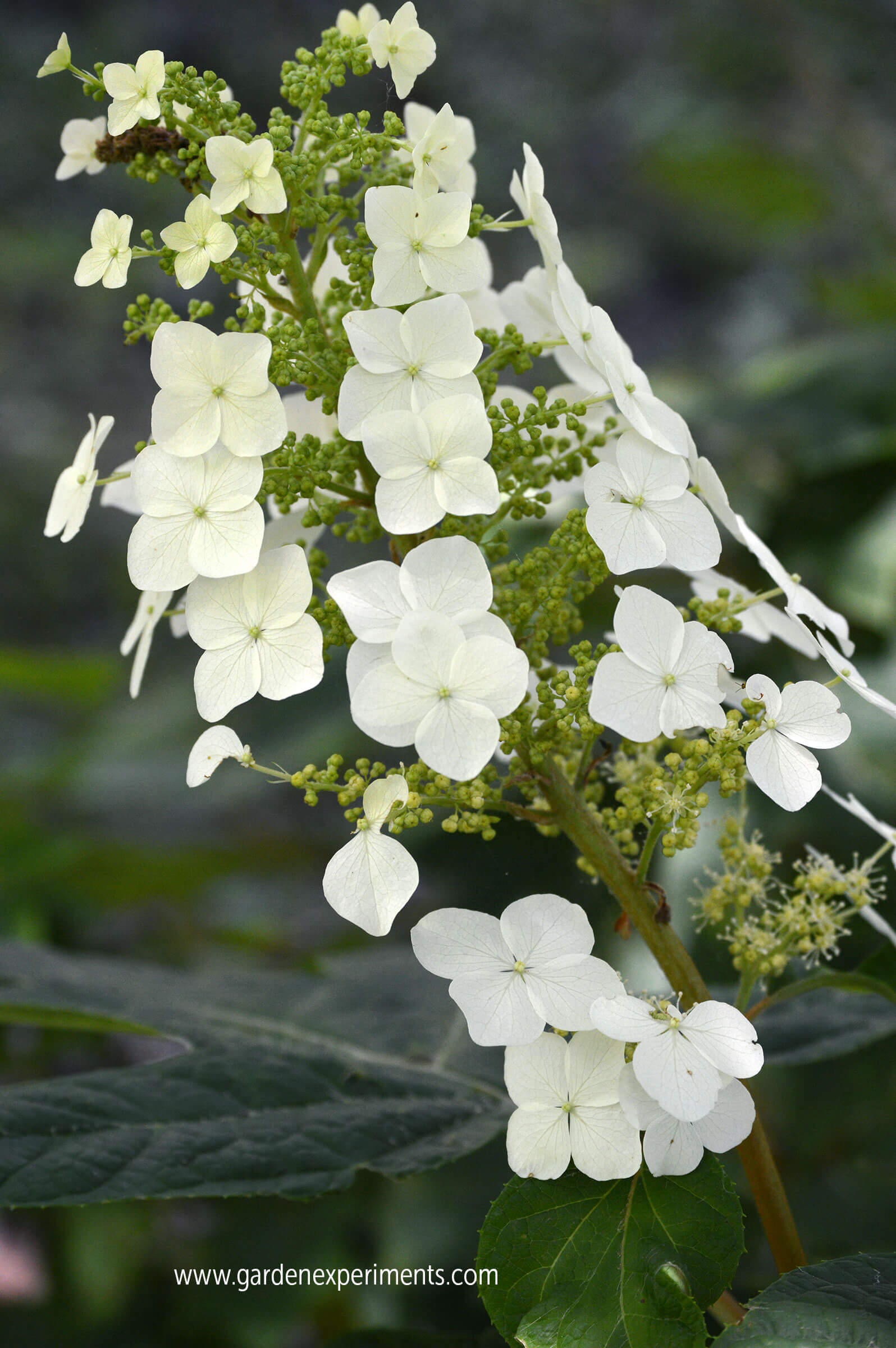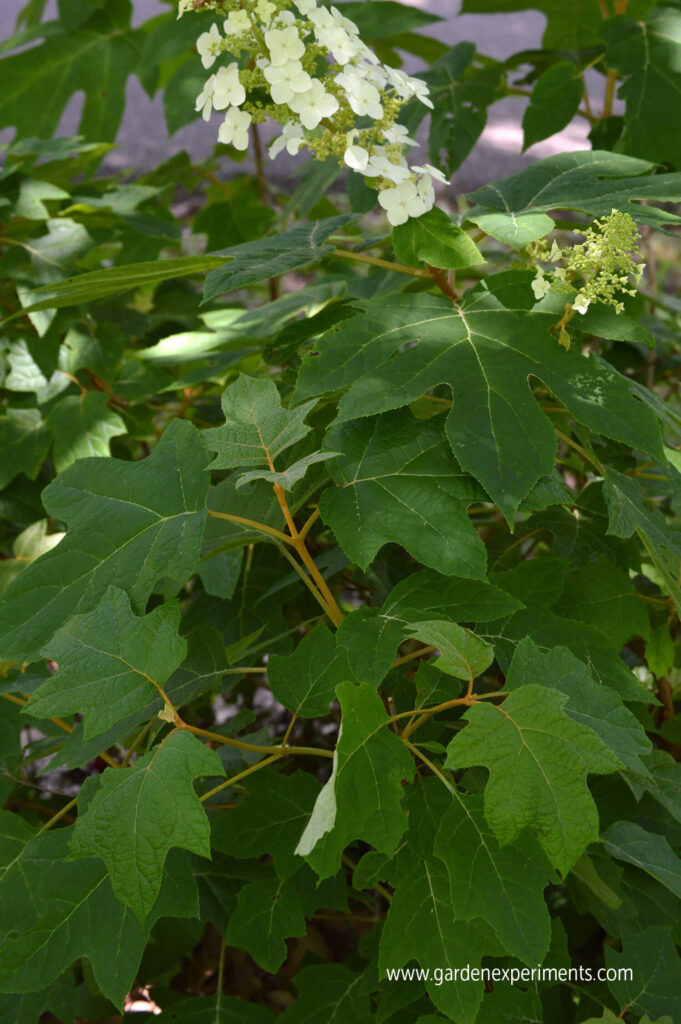Oakleaf hydrangea (Hydrangea quercifolia) is a mounding, perennial, deciduous shrub that can grow to heights of up to 10 feet and nearly as wide (up to 8 feet generally). It produces branches from the base of the shrub, creating a mound-like shape for the plant. It is hardy in zones 5b through 9, but it requires the warm summers to perform well.
Bloom Time & Pruning
Flowers begin in mid to late spring and continue through summer. Flowers are produced on the growth from the previous year, so you’ll need to be cautious when pruning. Only prune after the flowers are done – so that you don’t cut back too early and prevent the shrub from flowering.
The flowers are large and make nice cut flowers — they dry well too. So, this shrub will have attractive dry flowers to decorate your garden in the winter.
The leaves resemble large oak leaves with deep lobes and an almost palmate appearance. Leaves can grow to be very large – nearly 10 inches long and they grow on hairy stems. Leaves are oppositely arranged. In fall, the leaves change color from green to rich reds and browns.

Soil Conditions & Light Requirements
This hydrangea prefers semi-moist soil that drains well but is drought tolerant. In the wild, it is often found along stream banks or the edges of forests. It prefers mostly shade but can tolerate morning sun well. For the best blooms, you’ll need several hours of sunlight. It is hardy in USDA zones 5 to 9.
Water Requirements
Water well when first planted. They can tolerate dry conditions for a time (drought-tolerant), but they do best in evenly moist soil that drains well.
Wildlife Value
Unfortunately for us gardeners, deer love to eat this plant. This year, the deer took off all of my blooms. The flowers attract pollinators, including butterflies. Songbirds will eat the seeds.
Native Range
Oakleaf hydrangea is native to the southeast (native range: TN, AL, FL, GA, LA, MS, NC, SC, TN or DC) This shrub is hardy, drought tolerant, and has a relatively fast growth rate.
How to Propagate Oakleaf Hydrangea
Just like other hydrangeas, this shrub is easy to propagate with softwood cuttings. Take cuttings of 4-6 inches in length from green stem tips without flowers. Remove the bottom 3-4 inches of leaves. Dip the cut end into rooting hormone. Plant the cutting in potting mix. Keep evenly moist, but not wet for 3-4 months. Transplant to a larger pot or directly into the soil. Spring is the best time to root cuttings to give them ample time to develop roots to survive the winter.
You can also propagate this hydrangea by ground layering. Select a branch near the ground, remove the leaves from the 5 to 6 inches that you will bury in the soil. Dig a shallow trench in which to bury the branch. Cover the bare branch portion with soil and put a brick or something over top to weigh it down. Keep it watered. After a few weeks, you can clip the branch from the mother plant, dig it up, and transplant it.



